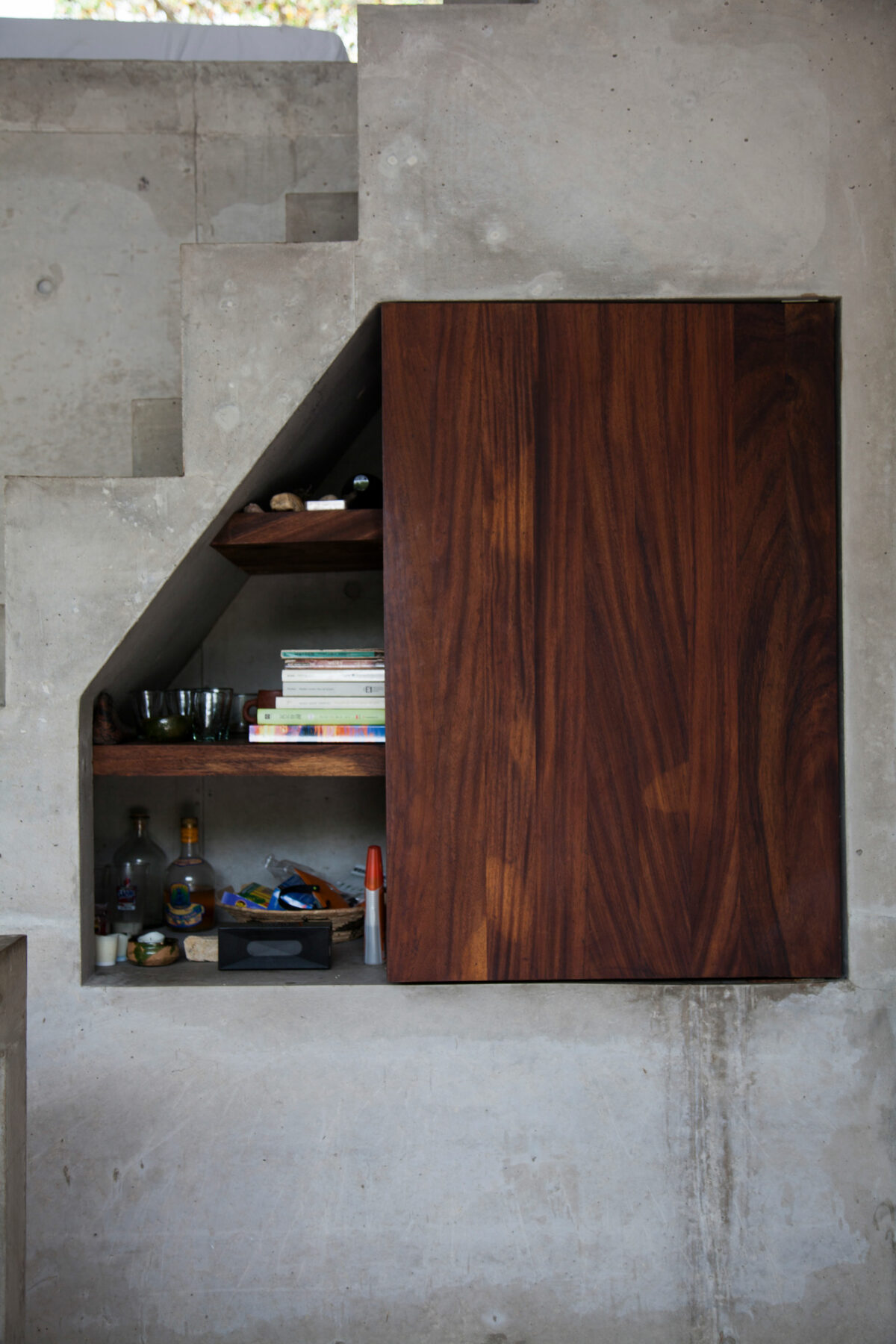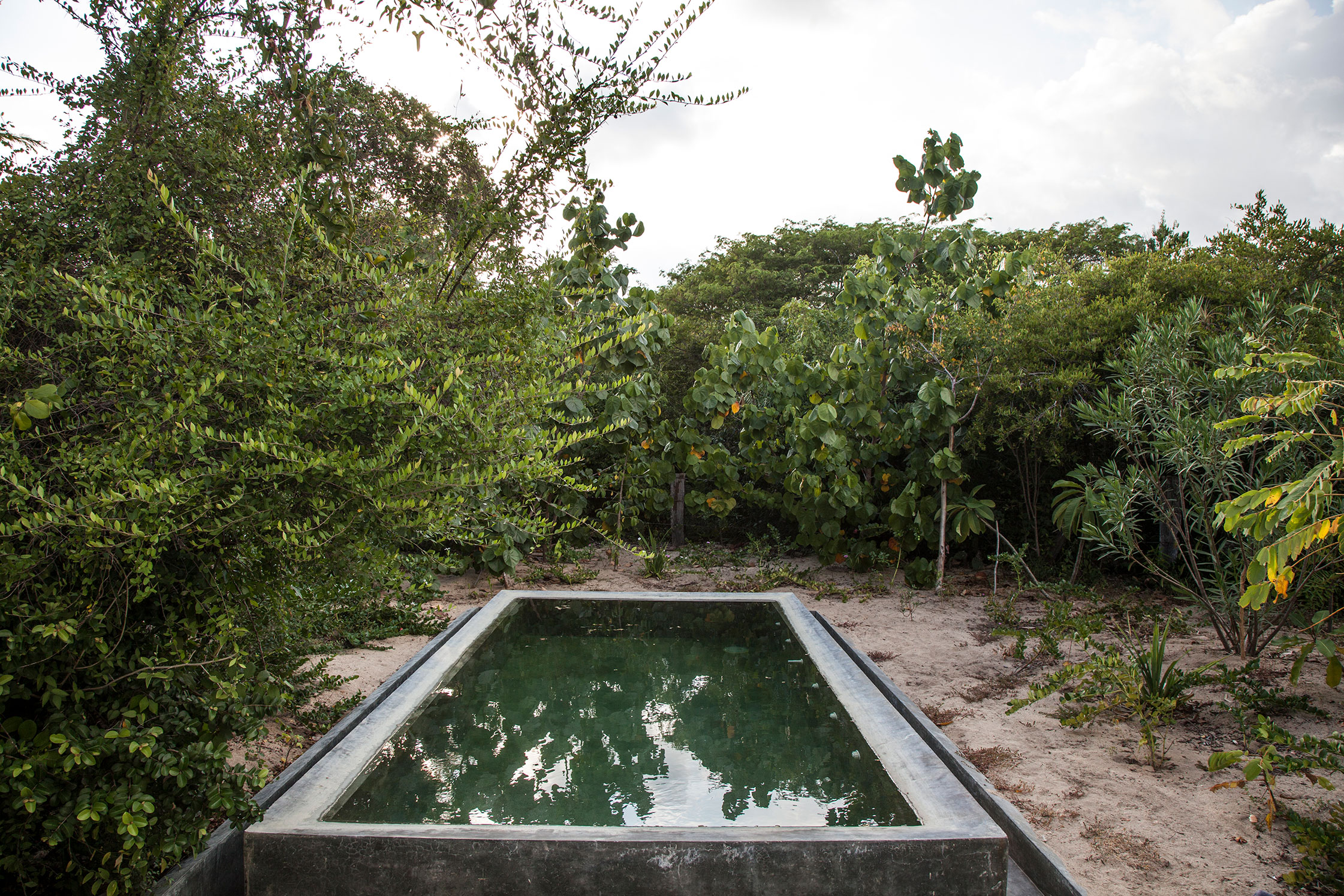“The name Casa Wabi was adopted from the concept ‘Wabi-Sabi’, which represents a vision of the world focused on the acceptance of the ephemeral and the imperfect, the art of finding beauty in imperfection, in the accident and depth of nature,” says Carla Sodi, Director of the non-profit art foundation Casa Wabi.
Created in 2014 by artist Bosco Sodi, designed by Japanese architect Tadao Ando and situated on the Oaxacan coast, Casa Wabi is an arresting site that hunkers down into the landscape—forming the ideal artist retreat.
Facing the South Pacific Ocean, the residence was formed from one 312-meter-long concrete wall, which divides the space between public and private programmes. “Concrete was the best option for this construction. It has found its way to blend with nature, by not disturbing the natural harmony of its surroundings, melding with the garden designed by Mexican architect, Alberto Kalach, and the beautiful oceanfront,” explains Carla.
“Above eye level captures the local and traditional spirit with the Palapa roofs. Whereas below eye level captures the contemporary essence with geometric concrete walls, columns, stone floorings and the wooden shutters. This is a very unique project with use of various uncommon materials, allowing me to create architecture and spaces that cannot be created other than in this location,” Tadao Ando has said of Casa Wabi.
“We are convinced that a personal encounter with art has a positive impact.”
Originally built for Bosco’s love of the area, the space is also open for residents and communities of the region to come together. The Casa Wabi Foundation was set up as a non-profit, civil organization that aims to promote collaboration and social commitment through art. The ongoing series of programs encourage a dialogue between artists and over 11 local communities. This may include boosting the local economy with the making of traditional crafts, or providing education workshops on the conservation of local species, or simply opening up discussions on wide-ranging topics including issues related to gender and identity. “We are convinced that a personal encounter with art has a positive impact, for which reason we seek to generate dialogue and interaction to enrich the programs’ participants outlook on life,” says Carla.
Casa Wabi created by Mexican artist Bosco Sodi and designed by Tadao Ando
The non-profit foundation in Oaxaca where residents and the local community come together

“This is a very unique project with use of various uncommon materials, allowing me to create architecture and spaces that cannot be created other than in this location,” Tadao Ando has said of his design for Casa Wabi.
The Pacific coastline path at Puerto Escondido


“Blending different systems and cultures, enabling them to exist side by side and fostering synergies between them, without denying their origins, is one of the lessons that artists can teach us.”
One such program on offer at Casa Wabi is a clay workshop designed specifically for (although not limited to) children in the surrounding schools. Combining an artistic appreciation of the material whilst learning of its value to the local economy and its traditional uses of the red clay from Oaxaca with an engaging hands-on educational series. “The foundation builds a universal dialog between the local community and contemporary art, certainly we have had great results,” says Carla. “Blending different systems and cultures, enabling them to exist side by side and fostering synergies between them, without denying their origins, is one of the lessons that artists can teach us. Art implies questioning, reflecting and sharing.”
It’s unusual for such a vast space designed for living to have no windows, at odds with our instinct to protect ourselves from the elements. But as Carla explains; “The use of glass on oceanfront or beach houses is not the best option since it requires a lot of maintenance because of the constant contact with saline.” While there is a rainy season, much of the year is consistently 80 degrees and sunny. “The light here is perfect. We use natural lighting during most part of the day (until artificial light is necessary) and we also get the most beautiful sunrises and sunsets—this is also seen reflected on the concrete.”
Casa Tiny, close to the surf town of Puerto Escondido
As the name suggests, a small concrete cabin made for two




“We both connected with the beauty of natural things and each other—something that we normally forget in a city as big as Mexico city,” says photographer Ana Hop.
For contributing FvF photographer Ana Hop, this was the perfect location to shoot, swim and stay awhile. Originally from Mexico City, Ana wanted to visit the region and decided to stay at Casa Tiny, just a short walk from Casa Wabi. “Puerto Escondido is one of my favorite places and I’ve always wanted to visit Casa Tiny and experience being in the middle of the beach with no connection to the rest of the world.”
Built by architect Aranza de Ariño, Casa Tiny, as the name suggests is a small retreatful house fit for two people. Not unlike Casa Wabi, the main material of the house is concrete, with floor, roof, stairs and even furniture designed and made in this heavy material. But rather than looking harsh or cold, Casa Tiny has a warmth and character—Aranza was in fact inspired by Henry David Thoreau’s novel Walden, which reflects on a simple life spent off-the-grid in nature. “The experience was amazing. I went there with the most important person in my life and we both connected with the beauty of natural things and each other—something that we normally forget in a city as big as Mexico city.”



Thank you, Ana, for sharing your time at Casa Wabi and Casa Tiny with us. The Casa Wabi foundation offers two residency programs. Learn more about the one in Oaxaca here and find further info on Casa Nana in Tokyo here. Check out upcoming exhibitions at Casa Wabi and find more at their venue Santa Maria in Mexico City. Enjoy the work of founder Bosco Sodi? Find more over on his site.
Be sure to check out more travel stories from our contributing photographers around the globe here.
Text: Andie Cusick
Photography: Ana Hop

